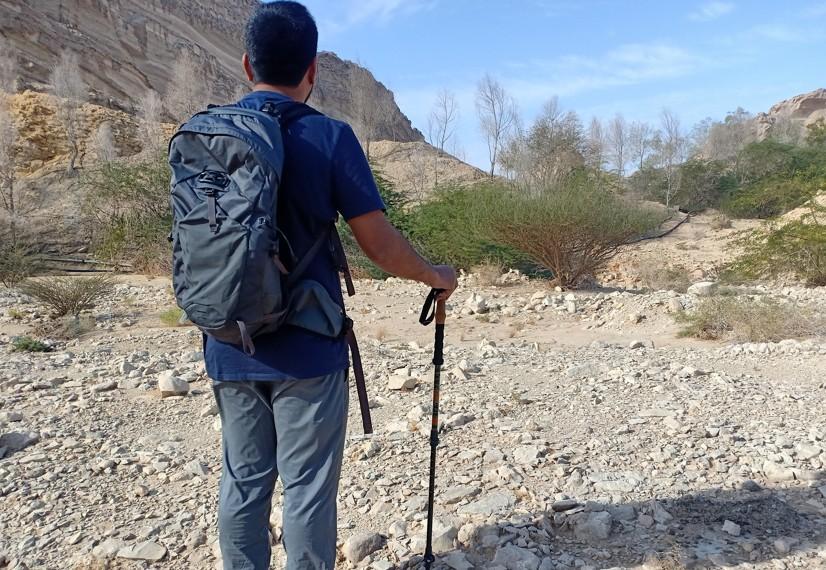Let’s get this out of the way: picking a daypack should be simple. You’d think it’s just a smaller backpack, right? Toss in your water bottle, snacks, maybe a rain shell, and go.
But if you’ve ever spent a day on the trail with a pack that digs into your shoulders. Or somehow manages to swallow your gear into a black hole of poor organization, you know better.
I’ve owned more daypacks than I care to admit. Some too bulky, some too flimsy, and few really left a welt on my hip during a steep descent.
Related: Best Osprey Daypack
Over time, I’ve learned what actually matters when choosing a pack that fits you and the way you hike—not just what looks good hanging in the gear shop. This guide breaks it all down, from sizing and fit to features you’ll actually use on the trail.
Understanding Daypacks
Before we dive into zippers, straps, and sternum clips, let’s start with the basics—what exactly is a daypack? In simple terms, it’s a small backpack meant to carry everything you need for a day hike and nothing more.
Not sure how it stacks up against a full-sized pack? Here’s a deeper dive into Daypack vs Backpack: What is the Difference?
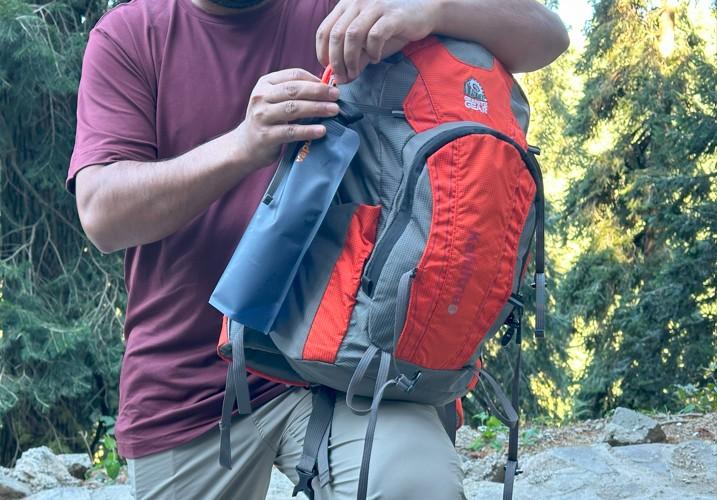
Think snacks, water, a first-aid kit, and maybe a puffy if the weather turns. You’re not packing for Everest here—just enough to be safe, comfortable, and not hangry five miles in.
Most of them fall in the 10 to 35-liter range.
Personally, I’ve found that anything under 15 liters makes me feel like I’m trying to hike with a fanny pack strapped to my back, and anything over 30 starts to tempt me to overpack. . The sweet spot depends on your style—but more on that in a bit.
Determining Your Hiking Needs
Here’s the thing about choosing a daypack: it’s not just about the pack. It’s about how you hike. Are you the type who charges up a trail with just a bottle of water and a protein bar? Or are you the “just-in-case” hiker with backup layers, a full first-aid kit, and three types of snacks? No judgment either way—I’ve been both, depending on the trail and my mood.
Let’s break it down by hike duration first:
- Short hikes (1–3 hours): A 10–15L pack is usually plenty. Just enough room for water, a snack, and maybe a light jacket.
- Half-day hikes (3–5 hours): You’ll want a little more space—think 16–25L. Extra space for lunch, an extra layer and sunscreen.
- Full-day hikes (5+ hours): 26–35L. Extra food, a rain shell, water filter, and your version of “prepared.”
Of course, pack size isn’t the whole story. You’ll also want to think about weather and terrain difficulty—that might mean more gear. I sweat a lot, so I always pack an extra shirt. Your loadout should match your needs, not someone else’s checklist. Need help choosing the right size? See What is the Best Size for a Daypack?
Key Features to Consider
Fit and Comfort
No matter how many bells or hydration ports a daypack has, none of it matters if it doesn’t fit. I’ve worn packs that looked great but felt like torture devices three miles in.
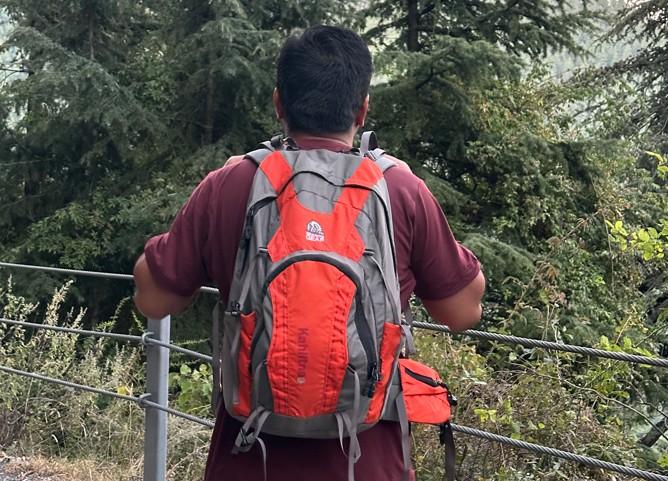
Fit and comfort aren’t just “nice to have”—they’re the difference between a great hike and a miserable one.
- Torso Length: This determines how a pack sits. Measure from the base of your neck to the top of your hips.
- Hip Belt: Even on a small pack, it shifts weight off your shoulders. It should wrap over your hip bones—not your stomach.
- Adjustability: Look for adjustable straps, sternum straps, and load lifters. I tweak mine mid-hike—loose on climbs, snug on descents. It makes a real difference.
Capacity and Size
Capacity might sound like a boring number on a tag—20L, 30L, whatever—but trust me, it makes a huge difference on the trail. Pick a pack that’s too small and you’ll end up struggling with your gear every time you repack. Too big, and you’ll be tempted to bring extra gear “just in case.”
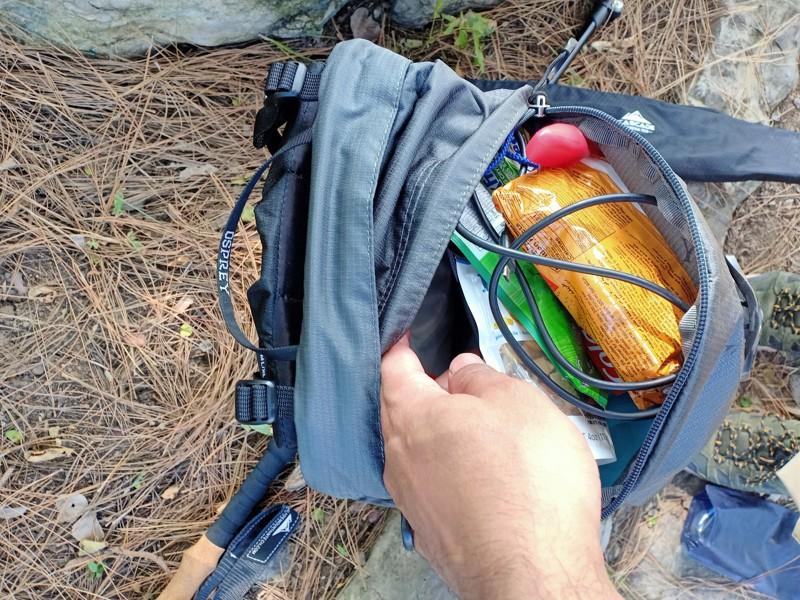
The key is to match the pack size to the actual length of your hike and the gear you realistically need. For me, a 20L pack is the sweet spot for most outings—it fits my gear without room for impulse items I’ll regret hauling uphill.
On longer hikes or in bad weather, I might go up to 30L, but only if I know I’ll use the space. One of my favorite packs in this range? Check out the Osprey Talon 22 Daypack for a solid, well-balanced option.
All in all, keep it lean, keep it light, and your knees will love you for it.
Organization and Accessibility
Ever tried digging through a black hole of gear just to find your sunscreen? I have—and let’s just say, by the time I found it, I didn’t need it anymore. It’s so frustrating and time-consuming on the trail.

Good organization in a daypack matters a lot more than you think. The more you hike, the more you will realize why you want to learn about how to pack your pack.
- Pockets: I’m a big fan of pockets. Side pockets, lid pockets, stash pockets—I’ll take them all. They help keep things in their place so you’re not unpacking your entire bag just to find your granola bar.
- Hydration Sleeve: If you use a hydration reservoir—and I do on longer hikes—a sleeve to hold it upright is a game-changer.
- External Attachments: Gear loops and bungee cords let you strap on trekking poles, jackets, or a tripod. Just make sure they’re secure.
Ventilation and Back Panel Design
Let’s talk sweat. Specifically: the kind that pools on your lower back five minutes into a sunny uphill grind. Trust me, it’s real—and if your pack doesn’t breathe, you’re basically putting brakes on your hiking.
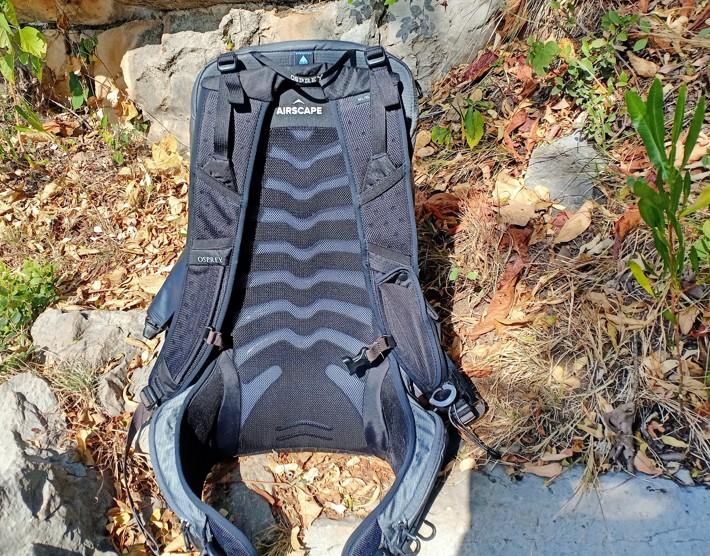
A well-ventilated back panel can make a big difference, especially on warm-weather hikes or uphill hiking. Some packs use mesh suspension to lift the pack off your back and let air flow through. I love them on the trail as the mesh allows my body to breathe.
Some also use raised foam channels that increase ventilation. Either way, the goal is to keep your shirt from turning into a soaked sponge by mile two.
Just a note that it won’t stop you from sweating completely. But it’ll make a noticeable difference in how fresh—and less swampy—you feel along the way.
Weight and Durability
Weight and durability: the eternal trade-off. Every hiker (including me) dreams of a featherlight pack. But the problem is that they don’t survive on tough, bumpy, and dusty terrains. So it’s all about finding the right balance for your hiking style.
Most daypacks are made from nylon or polyester, and if you really want to geek out, you’ll see something called a denier rating (like 210D or 420D).
Higher numbers usually mean thicker, tougher fabric—great for rough terrain. Lower numbers are lighter but might wear out faster if you’re hard on gear.
I once had a superlight pack that started wearing out after a few scrambles, so now I tend to look for something in the middle ground.
Ultralight packs feel amazing on your shoulders—until you snag one on a tree branch and it tears like wet paper. On the flip side, burlier packs might weigh a few extra ounces, but they’ll last for years of trail abuse.
Weather Resistance
Here’s a reality of hiking: if you’re out there long enough, you will get rained on. And when that happens, you’ll want your gear to be a little more than just optimistic about staying dry.
Most daypacks are water-resistant, not waterproof—which means they’ll shrug off light mist or a quick sprinkle. But if you get caught in a downpour, that extra layer and your trail mix are going to get soggy fast.
I’ve had more than one hike end with me drying gear on the car dashboard because I assumed “resistant” meant “rainproof.”
Look for packs that either come with a built-in rain cover—some stash into a hidden pocket—or plan to carry a separate pack cover just in case. They’re light, compact, and can save your stuff when the skies open up. If you hike in places with unpredictable weather—you’ll want to invest in a pack cover for peace of mind.
Specialized Daypacks
Not all daypacks are created equal—and that’s a good thing. There are packs built to meet specific needs.
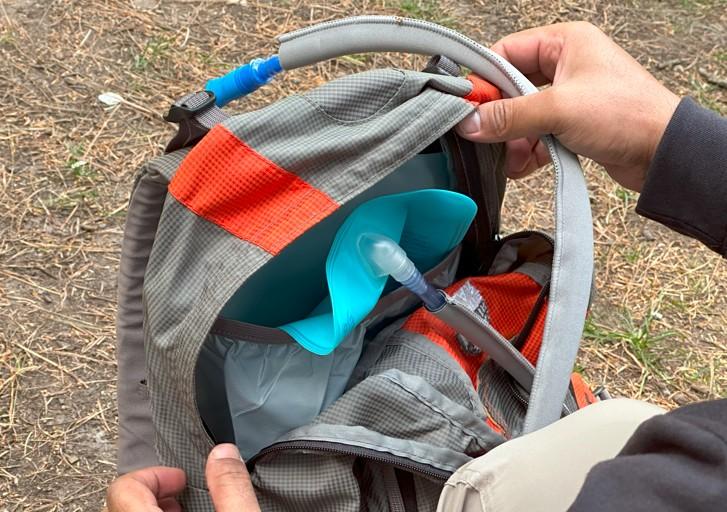
Here are a couple worth knowing about:
- Hydration Packs: Hydration packs come with built-in water reservoirs (usually 1.5–3 liters) and a hose that clips to your shoulder strap for easy access. They are convenient—but they can be a bit light on storage. If you’re just carrying water, a snack, and your keys, they’re perfect. But for longer hikes with gear, you might want something with more space.
- Women’s and Youth Packs: Fit matters, and that’s where these packs shine. Specialized packs aren’t always necessary—but if the fit’s right, they can turn an okay hike into a great one. I’ve seen more than one kid actually enjoy carrying their own gear once they had a pack that fit properly.
Trying Before Buying
Buying a daypack without trying it on first? That’s like buying hiking boots a size too small—you’ll regret it on the trail. Whenever possible, hit a store and actually test the pack loaded with weight. It’s the best way to get a feel for how it’ll perform when you’re out there.
Load it up with some weight—water bottles, snacks, a jacket—to simulate what you’d carry on a real hike. Then put it on and move around: walk, bend, even jog a little if you’re feeling ambitious.
Pay attention to:
- Pressure points: Does anything dig in?
- Ease of access: Can you grab snacks or maps easily?
- Stability: Does it shift or bounce?
If you’re stuck ordering online, check the return policy. Sometimes the best way to know if a pack fits is to take it for a short hike and see how it feels on the trail.
Common Mistakes to Avoid
- Buying for looks: A sleek pack won’t help if it doesn’t fit or function.
- Ignoring comfort: Sore shoulders ruin good views.
- Skipping ventilation: Sweaty backs lead to chafing and crankiness.
Avoid these mistakes, and you’re already ahead of the pack.
Conclusion
Choosing the right daypack isn’t just about grabbing the biggest or flashiest bag off the shelf. It’s about finding a pack that fits you and your hiking style—one that balances comfort, capacity, and features without weighing you down or making the trail harder than it needs to be.
Remember to measure your torso, think carefully about how much gear you really need, and don’t underestimate the value of good ventilation and durability. And if you can, try before you buy—there’s nothing like testing a pack under real conditions to know if it’s the right one.
With the right daypack on your back, your hike will be more enjoyable, less stressful, and a whole lot more comfortable. So take your time, choose wisely, and get ready to hit the trail with confidence.
FAQs
What to Look for in a Hiking Daypack?
Start with comfort, fit, size, and useful features—you want a pack that disappears on your back, not nags at every step.
Is a 20L or 30L Backpack Better for Hiking?
It depends on the hike—20L is perfect for lighter, shorter outings, while 30L works better if you’re packing for changing weather or longer days.
How to Pick the Right Hiking Backpack?
Try it on with weight, check the fit on your hips and shoulders, and make sure it moves with you—not against you.
What is a Good Size Daypack for Hiking?
Somewhere between 20 and 30 liters usually hits the sweet spot for most day hikers—roomy, but not overkill.
